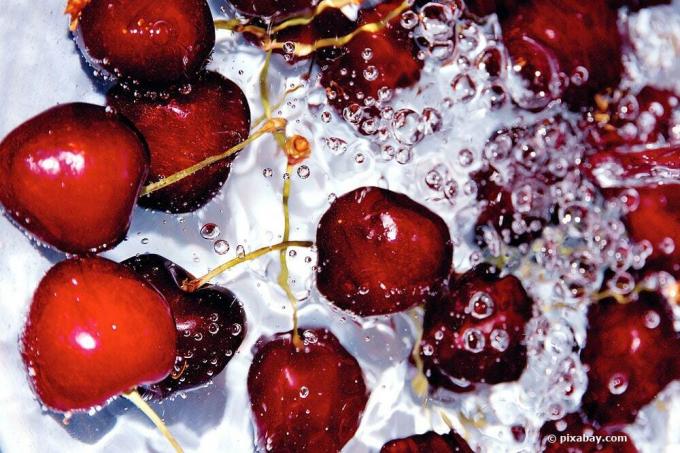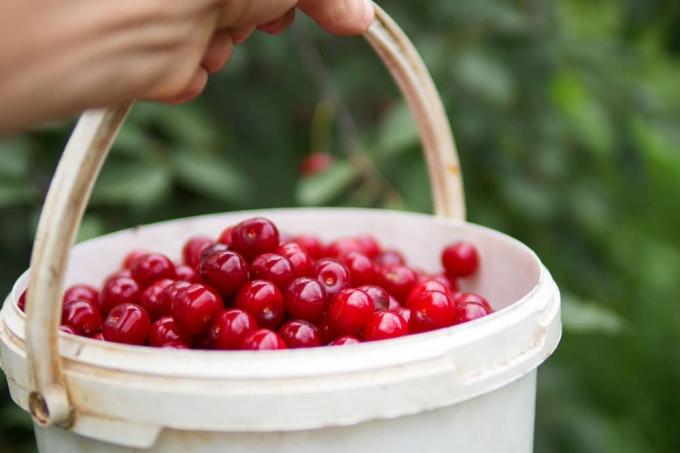
table of contents
- Recognize worm infestation
- Water method
- Container method
- Pitting
- Further measures
When the cherry tree is full of fruits, the anticipation of delicious, sweet cherries increases. The joy does not always last, it is often infested with maggots. You can find out how to deworm them here.
Recognize worm infestation
Most of the time you will notice a maggot when you cut the cherry in half. If you remove the pits from the fruit with a cherry pitter, you will often not notice the pests immediately. This only happens when the sweet cherries are processed and the larvae then swim in the jam, which is not particularly appetizing. With a little practice, you can recognize at least part of the infestation before you pit the fruit, without having to laboriously cut all of them in half.

Characteristics of infected fruits:
- they can have holes
- they can feel soft
- or they only have a soft spot
- Juice can escape at the stem base if the stem is removed and the fruit is squeezed a little
Note: Cherry fruit flies mainly attack red sweet cherries. Yellow sweet cherries and sour cherries are more likely to be avoided.
Water method
The fresh sweet cherries are placed in a bowl as they are and covered with water. After a while, any worms leave the fruit and swim on the surface of the water. Sometimes they also collect at the bottom of the bowl.
Advantages:
- Method is easy to use
- hardly any effort, few tools
- swimming larvae can simply be poured off

Disadvantage:
- Cherries can water down when damaged
- not all pests are removed
- Worms at the bottom of the bowl are more difficult to separate from the fruit
Container method
After picking, place the fruit in a container and seal it airtight. It is best to store the fruit in the refrigerator overnight. The maggots leave the fruit and collect on the inside of the lid.
Advantages:
- easy to use, no worming effort
- only an airtight container is required
- Larvae are simply collected from the lid

Disadvantage:
- not every maggot is removed
- when collecting, the larvae can fall back into the fruit
- If the vessel does not close completely tightly, the maggots can escape
Pitting
If the above methods are not feasible or insufficient to dewormer, the cherries can be pitted and examined by hand. Cut the cherries in half with the knife and then examine them carefully. The larvae can usually easily recognize them in the red pulp and remove them. If the fruits are very badly attacked and have become unappetizing, they are thrown away.
Advantages:
- every single cherry is examined and dewormed
- only one knife is required

Disadvantage:
- direct contact with the pests
- much time is required for a large amount of fruit
- exhausting in the long run
- you must then process the fruit immediately
Further measures
If you have already pitted the cherries and want to use them to make jam, for example, the sugar is added and the cherries stay overnight. The fruit pulls juice and the whitish larvae swim to the surface the next day, where you can skim them off.

Cherries that are to be processed with alcohol can be dewormed in the same way. These too remain in the alcohol overnight and the maggots are then removed.
Halved or pitted sweet cherries can also be washed thoroughly with water to successfully remove the larvae. However, they lose a lot of juice and aroma in the process.
Note: In principle it is possible to eat the larvae with you, they are neither poisonous nor dangerous.
